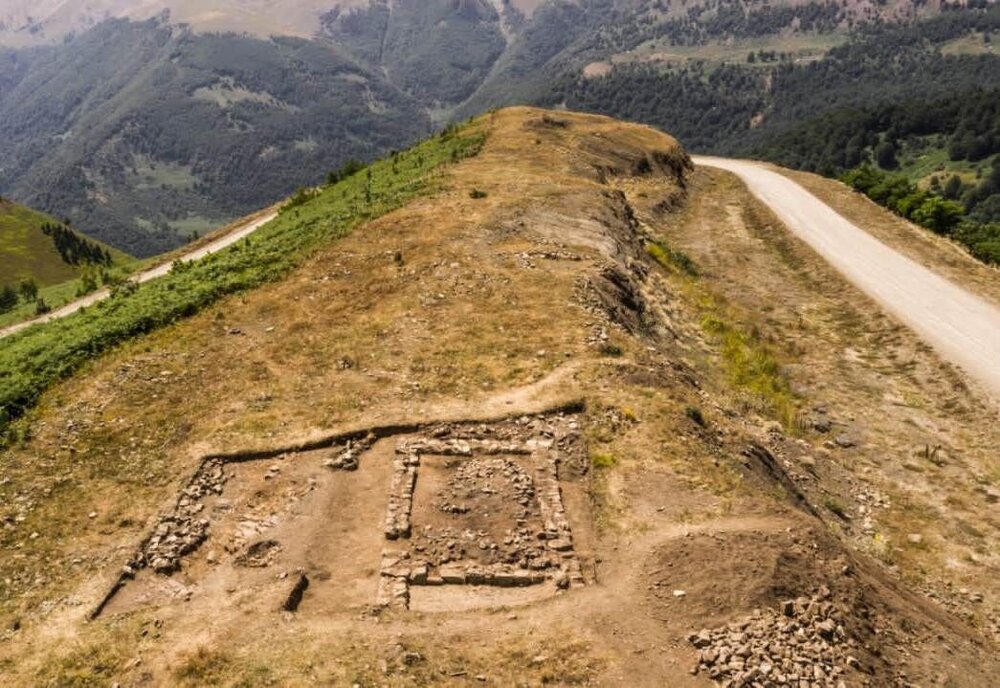Masuleh yields clues about ancient smelting workshops

TEHRAN–Archaeologists have discovered clues about the history of iron smelting in Masuleh and its surrounding highlands in Gilan province, northern Iran.
“It was the third archaeological season carried out here in Masuleh, which yielded ruins and relics dating from the early 5th century AH to the middle of the 7th century AH,” the provincial tourism chief Vali Jahani said on Monday.
Archaeologists carved several trenches, one of which measuring 3.5 x 7.5 meters, gave clues about an iron smelting furnace belonging to the end of the 5th century AH to the beginning of the 6th century AH, the official said.
The picturesque village of Masuleh is famed for its Lego-shaped earthen houses built on another’s rooftop. Archaeological evidence suggests the history of human presence in mountains near Masuleh dates back to the late Bronze Age (2000-1500 BC).
“New findings suggest this site was once a local hub for smelting iron ore and extracting pure iron and finally making iron tools,” the official said.
“Previous archaeological seasons held in 1374 (1995) and 1391 (2012) yielded ruins of houses and workshops of iron smelting, as well as cultural materials including potteries and handmade tools, along with a large amount of waste material from iron smelting, which shows the extraction of iron and the manufacture of various iron tools in this place,” Jahani explained.
According to the official, remains of residential buildings, smelting workshops, tools for the extraction and manufacture of metal objects (Challangari), and glazed potteries related to the Seljuk era (1037–1194) were found in previous excavations.
The recent archaeological season was aimed at obtaining additional information about the approximate extent of Old Masuleh, unearthing ancient artifacts, and exploring possible reasons for the migration of its inhabitants to the current village.
According to the available documents, the earthquake of 890 AH and the outbreak of the plague in 943 AH were possible reasons for the migration of the ancient people of Masuleh to the current location of this historic village, Jahani explained.
Archaeological research held last year concluded that human beings resided in these highlands seasonally, at least since the late Bronze Age. The survey was carried out as part of a preliminary process to compile an all-inclusive dossier for the touristic village to be presented to the United Nations Educational, Scientific, and Cultural Organization.
“These new findings would help us to complete the Archaeological Atlas of the western part of Gilan, especially in the highlands of Alborz,” the official stated.
Results of that preliminary survey suggested that the mountainous landscape was probably occupied by ancient herders and nomads, at least since the late Bronze Age. Moreover, the survey found remains of late prehistoric, historic, and Islamic times were recorded on the mountain top above 2500 meters above sea level.
Gilan is well-known for its rich Iron Age cemeteries such as Marlik that have been excavated over the past century. It was once within the sphere of influence of the successive Achaemenian, Seleucid, Parthian, and Sassanid empires that ruled Iran until the 7th century CE. The subsequent Arab conquest of Iran led to the rise of many local dynasties, and Gilan acquired an independent status that continued until 1567.
According to Freidoun Biglari, a Paleolithic archaeologist at the National Museum of Iran, the discovery of stone artifacts on these highlands indicates that the area was seasonally visited by prehistoric human groups. He added that archaeological evidence found in other parts of Gilan, such as Darband Rashi Cave, shows that the western half of the Alborz range has been inhabited by Paleolithic hunter-gatherer groups since the Lower Paleolithic period.
“Therefore, considering the existence of numerous caves and suitable stone raw resources in the study area, we expect to find more definitive archaeological evidence of the Paleolithic occupation of the Masuleh region,” Biglari explained.
Home to some of the most stunning landscapes in the country, Masuleh is one of the many stepped villages that are quite common to find around the country, especially in Iranian Kurdistan and around Mashhad. They have been built on a hill so steep that the roof of one house is the pathway for the next.
Whereas practically, all stepped villages in Iran have been able to keep their rural and traditional essence, for some reason, Masuleh has evolved into a popular touristic destination that especially attracts domestic vacationers.
According to experts, Masuleh is receiving the attention of all the guidebooks, portraying it as a dreamy mountain village, so, slowly, it is becoming the prime destination for those travelers who have a little more than two weeks in Iran.
Iran is hoping to win UNESCO recognition for Masuleh.
AM
Leave a Comment